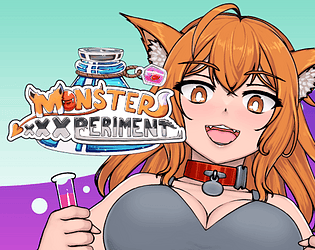Exploring Symbolism: What Does The Face Paint Symbolize In Lord Of The Flies
In “Lord of the Flies,” the face paint symbolizes the descent into savagery. The boys’ painted faces not only conceal their identities but also reflect their inner wildness. As they indulge in painting themselves, they embrace a primal instinct that leads to violence and chaos on the island. The face paint serves as a visual representation of the moral decay pervading their society.
Decoding the Symbolism of Face Paint in “Lord of the Flies”
William Golding’s classic novel “Lord of the Flies” is a gripping tale of survival, human nature, and the thin line between civilization and savagery. One of the most intriguing symbols in the book is the face paint worn by the boys as they descend into primal behavior on the deserted island.
The Introduction of Face Paint
Early in the story, the boys on the island start using natural materials to paint their faces. At first, the face paint serves as a fun and playful way for the boys to feel a sense of freedom and anonymity. However, as the plot unfolds, the symbolism behind the face paint becomes much darker and more significant.
The Transformation into Savages
As the boys become increasingly disconnected from the rules of society and the constraints of civilization, the face paint takes on a new meaning. It becomes a symbol of their descent into savagery and their loss of inhibitions. The vibrant colors and patterns on their faces mirror the growing chaos and violence on the island.
The Mask of Anonymity
One of the key aspects of the face paint in “Lord of the Flies” is its ability to mask the boys’ true identities. By hiding behind the paint, the boys are able to unleash their innermost desires and impulses without fear of judgment or consequence. This mask of anonymity gives them a sense of power and freedom that they do not experience in their regular lives.
The Disintegration of Civilization
As the boys’ society unravels and their primal instincts take over, the face paint becomes a visual representation of their regression. The once innocent and playful act of painting their faces now signifies the loss of civilization and the breakdown of order. The more they indulge in their savage behaviors, the more intricate and menacing their face paint becomes.
The Symbolism of Colors and Patterns
Throughout “Lord of the Flies,” the colors and patterns of the face paint hold deeper meanings that reflect the emotional and psychological states of the characters. The use of red, for example, symbolizes aggression and bloodlust, while black represents fear and darkness. The intricate patterns drawn on their faces also signify their shifting alliances and deteriorating mental states.
The Influence of Fear
As fear grips the boys and drives them to commit unspeakable acts, the face paint becomes a tool for them to confront their inner demons. The grotesque designs they paint on their faces mirror the horrors they are capable of when pushed to their limits. The face paint acts as a physical manifestation of their inner turmoil and descent into madness.
The Loss of Identity
As the boys become consumed by their primal instincts and the chaos of the island, their individual identities start to fade away. The face paint serves as a way for them to shed their former selves and embrace their new savage personas. In a sense, the face paint becomes a mask that allows them to disconnect from their past lives and fully immerse themselves in the lawless world they have created.
The Face Paint as a Mirror
Ultimately, the face paint in “Lord of the Flies” acts as a mirror that reflects the boys’ inner struggles and the darkness that lurks within each of them. It serves as a visual reminder of the thin line between civilization and savagery, highlighting the fragile nature of human decency when faced with extreme circumstances. The face paint is a haunting symbol of the boys’ transformation from innocent children to ruthless savages.
In conclusion, the face paint in “Lord of the Flies” symbolizes the loss of civilization, the descent into savagery, and the internal conflicts that shape human behavior. Through the use of colors, patterns, and symbolism, William Golding masterfully conveys the psychological and emotional journey of the characters as they grapple with their darkest impulses. The face paint serves as a powerful reminder of the capacity for both good and evil that resides within us all.
As you delve deeper into the world of “Lord of the Flies,” take a moment to reflect on the significance of the face paint and what it reveals about the complexities of human nature. In a story where survival is paramount and morality is tested, the face paint stands out as a powerful symbol of the fine line between civilization and savagery.
Frequently Asked Questions
What is the significance of the face paint in “Lord of the Flies”?
The face paint symbolizes the boys’ descent into savagery and the loss of their civilized behavior. It serves as a mask that allows them to hide their true selves and gives them a sense of anonymity while engaging in violent and primal acts on the island.
How does the face paint affect the behavior of the boys in “Lord of the Flies”?
The face paint acts as a transformative element, enabling the boys to shed their societal inhibitions and embrace their primal instincts. It empowers them to commit acts of brutality and cruelty that they might not have otherwise done without the anonymity and sense of power the paint provides.
What role does the face paint play in the theme of civilization vs. savagery in “Lord of the Flies”?
The face paint serves as a visual representation of the boys’ regression from civilized beings into savage hunters. It highlights the thin line between order and chaos, showing how easily the boys can abandon their humanity when stripped of societal norms and constraints.
Final Thoughts
In “Lord of the Flies,” the face paint symbolizes the loss of civilization and the descent into savagery. As the boys paint their faces, they become disconnected from their former selves and embrace their primal instincts. The face paint serves as a visual representation of their growing barbarity and separation from societal norms. Ultimately, it symbolizes the destructive power of human nature when removed from the constraints of civilization.




